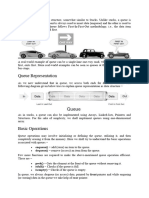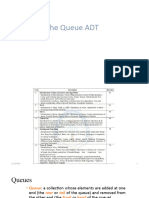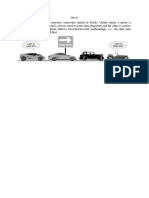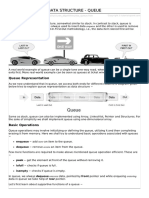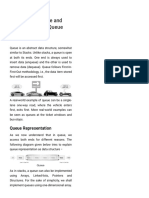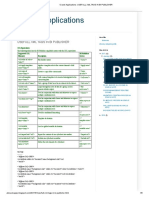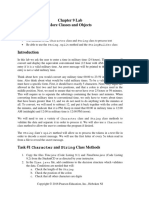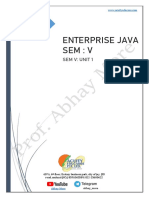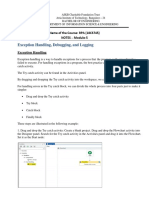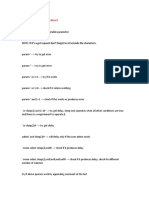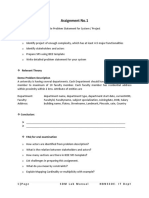0% found this document useful (0 votes)
28 views8 pagesQueue Lab Manual
The document outlines an experiment focused on implementing a Queue data structure using both a linked list and a circular queue with arrays in C/C++. It details the objectives, basic operations, and algorithms for enqueueing and dequeueing elements, along with example code for practical implementation. Additionally, it includes a conclusion section with sample viva questions related to the queue data structure.
Uploaded by
mehtaritika2211Copyright
© © All Rights Reserved
We take content rights seriously. If you suspect this is your content, claim it here.
Available Formats
Download as PDF, TXT or read online on Scribd
0% found this document useful (0 votes)
28 views8 pagesQueue Lab Manual
The document outlines an experiment focused on implementing a Queue data structure using both a linked list and a circular queue with arrays in C/C++. It details the objectives, basic operations, and algorithms for enqueueing and dequeueing elements, along with example code for practical implementation. Additionally, it includes a conclusion section with sample viva questions related to the queue data structure.
Uploaded by
mehtaritika2211Copyright
© © All Rights Reserved
We take content rights seriously. If you suspect this is your content, claim it here.
Available Formats
Download as PDF, TXT or read online on Scribd
/ 8


